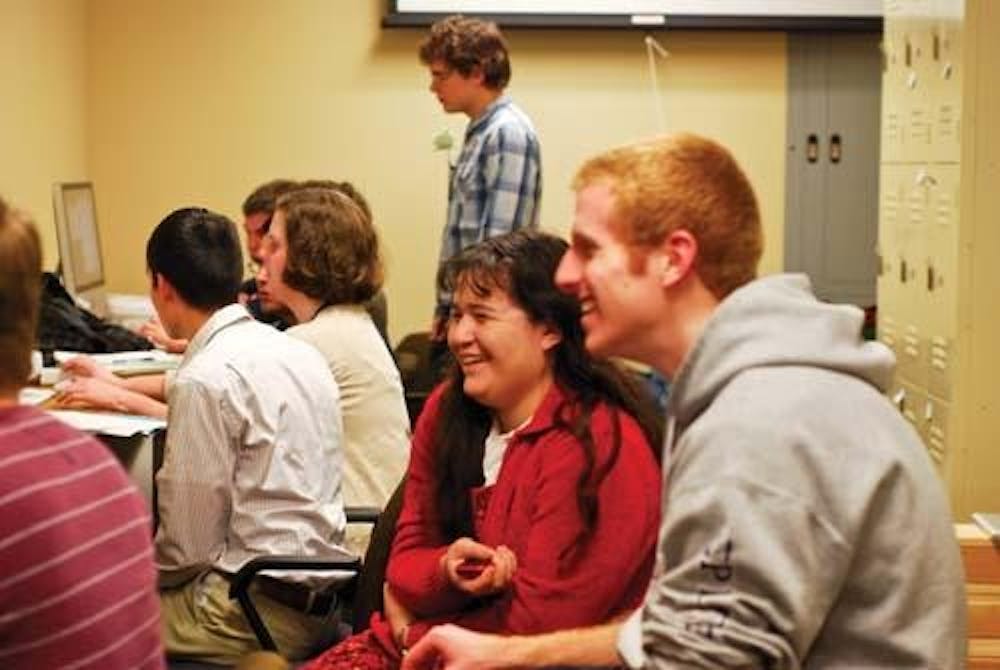Popular engineering class may be eliminated next year due to curriculum change
Seniors Chelsea Colvin (center) and Brent Groulik (right) laugh as they work on their program (Jackie Jeffers | The Beacon)
By Philip Ellefson, Staff Writer -- ellefson15@up.edu
On the course schedule, EE 439 is called "Microprocessor System Design." But computer science professor Tanya Crenshaw and her class call it "Super Magic Robot Funtime."
In a narrow room, groups of three or four students huddle around computers and tinker with unscrewed circular robots. They discuss which direction to make it move and make small adjustments to line after line of code on the computers.
The electrical engineering class is using Roombas, a type of robotic vacuum cleaner, to learn how to program microprocessor systems to perform a variety of commands.
"Right now we're trying to make it drive by itself without telling it what to do," senior Allan Young said.
Young enjoys the class because it gives him an opportunity to practice the skills he has previously learned in his electrical engineering classes.
"It's really hands-on, more than any of the other classes we have had here," Young said. "We get to play around with it. You can make it do whatever you want it to do, so everyone's comes out a little different."
Although the students enjoy working on the Roombas with Crenshaw, the class may not be offered in the future due to a change in the electrical engineering curriculum. Because of growing enrollment rates, the engineering programs are trying to simplify the overall curriculum, resulting in some classes being taken away, Crenshaw said.
Crenshaw is a professor in the computer science department, but because she also has an electrical engineering degree, she has helped out in the department by teaching EE 439. As the department streamlines the program, they are taking some specialty electives, like Microprocessor System Design, out of the curriculum.
EE 439 was nearly discontinued last semester, but senior Adrian Gorman and other students currently enrolled in the class rallied to continue it.
"They were going to have this class be canceled, but we sat down and said, ‘We are going to have this class, because everyone wants to take it,'" Gorman said.
When the students got together with Crenshaw, they tried to convince her to teach it for another semester.
"There were cat videos involved, and that melts my heart," Crenshaw said.
Gorman thinks working with Roombas is an enriching experience.
"We get to have instant-gratification engineering projects," Gorman said. "We get to write things, and then see immediate results."
In the class, students work with the same Roombas all semester, making them a little more complex each time they work with them.
"Every week we make the Roombas into something more," Crenshaw said. "They'll be able to talk to each other. You can email the Roomba."
Senior Devin Pentecost thinks the most interesting part of the course is watching the computer interact with the robot.
"When you're programming, it's just limited to the computer, but in this class it's connected to some physical connection," Pentecost said. "There's going to be a bunch of zeros and ones making that thing move."
Students in the class hope the electrical engineering faculty will consider continuing EE 439 beyond this semester. They see it as a fun, practical, valuable learning experience.
"It's kind of like an adventure," Young said.
Senior Sean Pfister takes notes while his teammates write code (Jackie Jeffers | The Beacon)








